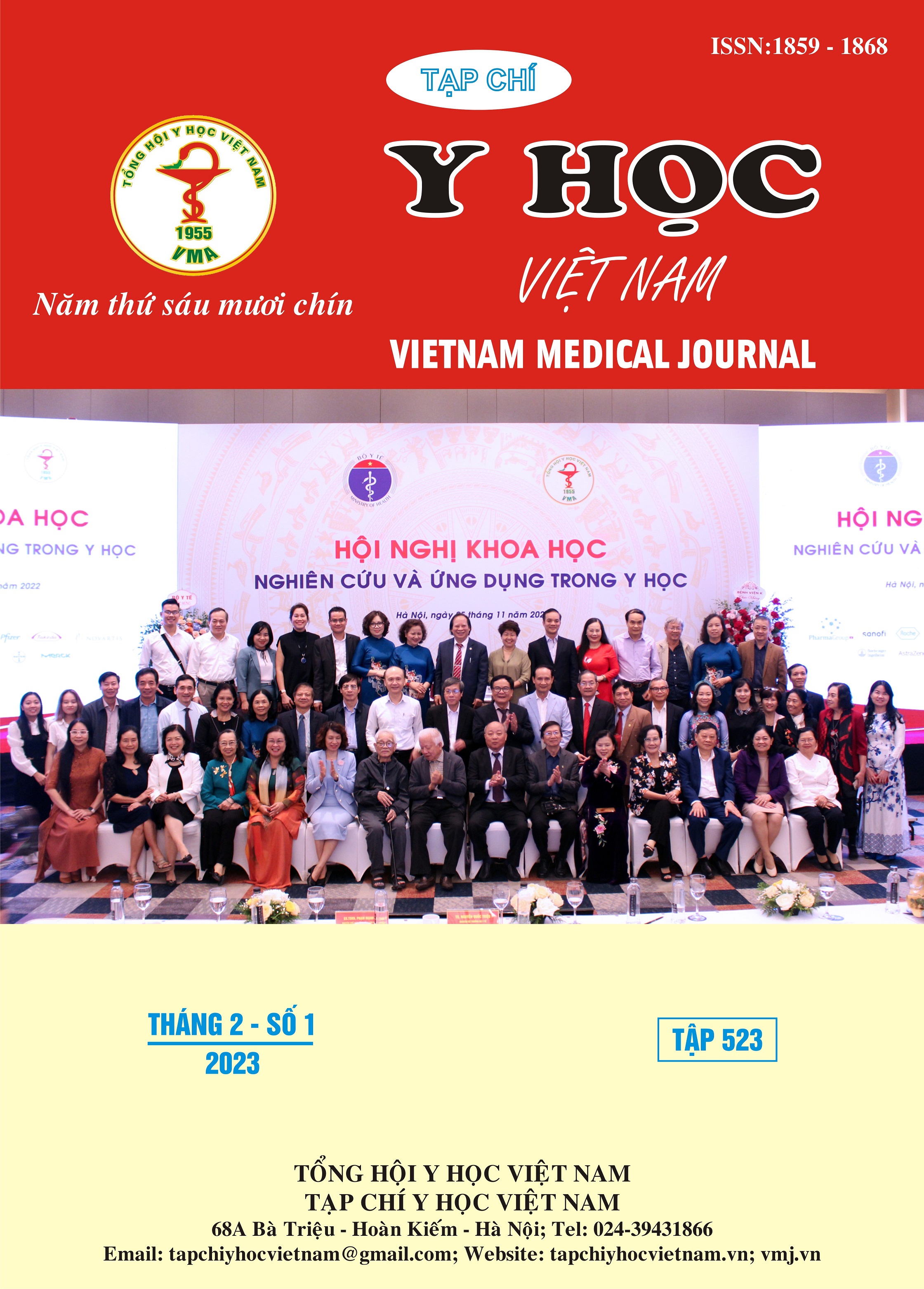PRETARSAL APPLICATION OF BOTULINUM TOXIN FOR TREATMENT OF BLEPHAROSPASM
Main Article Content
Abstract
Objectives: Botulinum toxin type A injection is a highly effective treatment for blepharospasm. The study was conducted to compare the treatment results of patients when injecting into the pretarsal orbicularis oculi to find the optimal position to minimize side effects and increase treatment effectiveness. Method: We studied 58 patients with blepharospasm who receied Botulinum toxin type A according to both injection techniques successively: pretarsal anh preseptal. They were examined and treated at the Eye hospital of Ho Chi Minh city from 03/2020 to 03/2021. Results: The mean Schirmer-test value before injection compared to after injection and the TBUT value before injection compared to after injection both increased (from 4.82 mm to 7.36mm and 5.98 seconds to 10.22 seconds), increased blinking frequency and increased and the time to close the eyes tightly after injection improved significantly compared to before injection. In the pretarsal group, 54% of eyes recorded good improvement in symptoms of difficulty in opening eyes, increased blinking frequency, fear of light, etc. The duration of benefit of the preseptal group was 4.89 months. In addition, the rate of complications in the preseptal injections was 44% (22 eyes) including ptosis, lacrimation, diplopia and hematoma, higher than in the pretarsal injections was 8%. The rate of ptosis in the pretarsal group was 6%, more than in the preseptal group (22%). Injections into the pretarsal had higher effective and duration of benefit, and less complications (p < 0.05). Conclusion:Injecting Botulinum Toxin type A into the pretarsal orbicularis oculi in the treatment of blepharospasm is a safe method, reducing ptosis complications, increasing treatment response and bringing high efficiency.
Article Details
Keywords
Botulinum toxin type A, blepharospasm, pretarsal orbicularis oculi.
References
2. Costin BR, Plesec TP, Kopplin LJ, Chundury RV, McBride JM, Levine MR, Perry JD (2015). “Regional variations in orbicularis oculi histology”. Ophtal Plast Reconstr Surg, 31(4), 325-327.
3. J Price , S Farish, H Taylor, J O'Day (1997). “Blepharospasm and hemifacial spasm. Randomized trial to determine the most appropriate location for botulinum toxin injections”. Ophthalmology, 104(5), 865-8.
4. Jankovic J (1996). “Pretarsal injection of botulinum toxin for blepharospasm anh apaxia of eyelid opening”. J neurol Neurosurg Psychiatry, 60(6), 704.
5. Lalita Sanguandikul, Supanut Apinyawasisuk, Supharat Jariyakosol, Parima Hirunwiwatkul, Yuda Chongpison (2021). “Complications of Preseptal Versus Pretarsal Botulinum Toxin Injection in Benign Essential Blepharospasm: A Randomized Controlled Trial”. Am J Ophthalmol, 232, 9-16.
6. Park DI, Shin HM, Lee SY, Lew H (2013). “Tear production and drainage after botulinum toxin A injection in patients with essential blepharospasm”. Acta Ophthalmol, 91, 08-12.


